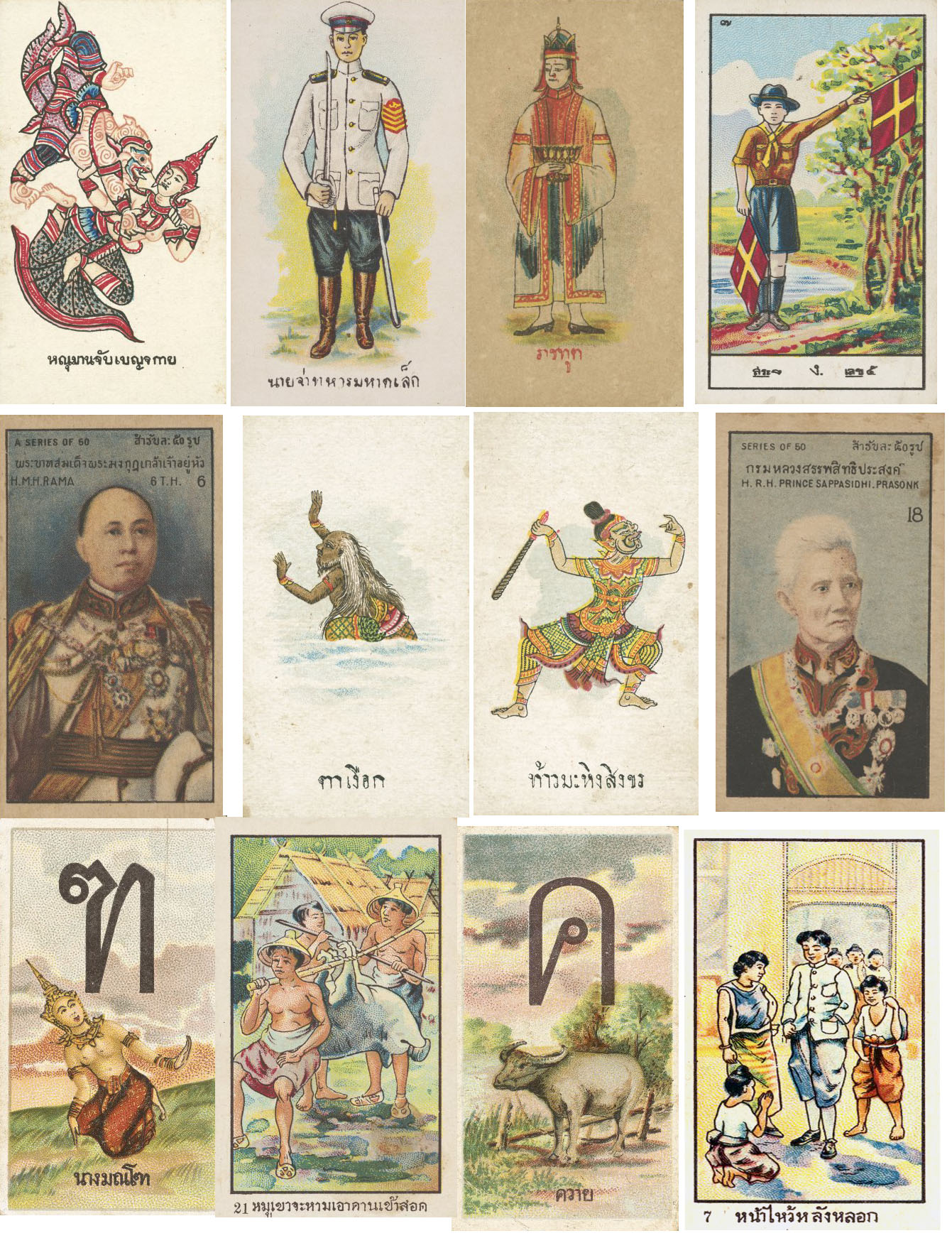By Saowapha Viravong, National Library of Australia
We are pleased to announce to New Mandala readers that the NLA’s significant Thai cigarette card collection has been digitized and the images are now freely available through our catalogue.
In recent years, consistent with our policy of collecting social and political ephemera, the NLA has obtained and digitized 14 sets of cigarette cards from the early decades of the 20th Century. Users are advised that low resolution images can be downloaded directly from our site, and using the Copies Direct service high resolution images can be obtained. The images are all out of copyright, given the age of the card, and can be reproduced for research or other reasonable purposes.
Cigarette cards originated in the 1800s; manufacturers inserted cards into paper cigarette packages in order to stiffen the packaging. These inserts evolved into trading cards when they began to be decorated with images to promote and advertise cigarette brands. The first recognisable cigarette cards were given life in US in 1875, then the UK, and subsequently many other countries including Siam/Thailand. These cards became valued collectibles that were acquired and traded by smokers. In 1917 a general shortage of materials due to the First World War stopped the production of cards in many places.
Cigarette card trading came to Thailand during the reign of Rama V, and peaked during the reign of Rama VI. In Bangkok, р╕зр╕▒р╕Фр╕Юр╕гр╕░р╣Ар╕Кр╕Хр╕╕р╕Юр╕Щр╕зр╕┤р╕бр╕ер╕бр╕▒р╕Зр╕Др╕ер╕▓р╕гр╕▓р╕бр╕гр╕▓р╕Кр╕зр╕гр╕бр╕лр╕▓р╕зр╕┤р╕лр╕▓р╕г (or р╕зр╕▒р╕Фр╣Вр╕Юр╕Шр╕┤р╣М – Wat Pho) was a haven for cigarette card trading every Sunday, from 1912 for 20 years; After World War II the Thai government introduced its monopoly over tobacco and without commercial imperative the manufacture of cards declined and with it the popularity of collecting and trading.
The period of the cigarette card craze was also the time of Thailand modernization and social reform. Much of this is reflected in the cards of the time, in them we find images of things such as military and public service uniforms, professions old and new, different nations and races, technical innovations and scientific discoveries, public hygiene messages, and signs of modernity – in addition to traditional and popular commercial images. Thailand was the centre of cigarette cards in Southeast Asia; those with geographical themes hardly feature Anman (or Vietnam), Cambodia, or Laos; while Burma does feature on a few.
Historically 176 sets of cards, totaling around 9000 individual cards, representing 42 tobacco companies, were made for the Thai market. Of these some 60 sets were Thai specific designs. To many people, these cards are simply beautiful; collectable as artistic or decorative objects, occasionally traded for significant sums. Since we have been collecting these at the NLA, some readers have been asking about or pointing out their value for social history research. One can recognise in the sets some kind of encyclopedic representation of knowledge. In a time when kids and even adults had limited access to textbooks or other sources of information about the modern world, many people would have greatly appreciated the information reflected in these cards.
In future posts we will introduce selected cards to New Mandala readers. In the meantime if you want to find out more about Thai cigarette card digital collection, simply search in our catalogue with the search terms “Thai cigarette card”.
 Facebook
Facebook  Twitter
Twitter  Soundcloud
Soundcloud  Youtube
Youtube  Rss
Rss 
